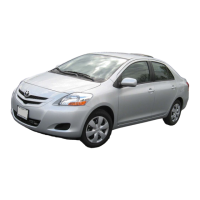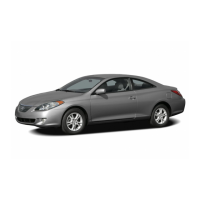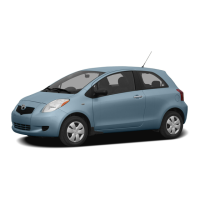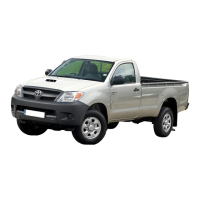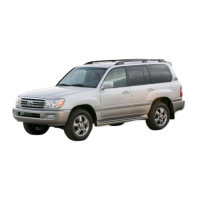372
2007 SEQUOIA from Aug. ’07 Prod. (OM34462U)
! Four−wheel drive models only—Toyota
recommends not using four−wheel drive
on dry hard−surfaced roads, because
four−wheel driving will cause unneces-
sary noise and wear, and poor fuel
economy.
! Four−wheel drive models only—In cold
temperatures, noise may occur when
driving in two−wheel drive before the
transfer is warmed up. Therefore, first
drive in four−wheel drive until the
transfer is warmed up.
! Vehicles with rear height control air
suspension: When driving on a bumpy
road, set the vehicle height to “HI” in
automatic control mode, then select
manual control mode by pushing the
height control mode select switch. You
should drive at a speed of less than
30 km/h (18 mph).
CAUTION
! Before driving off, make sure that
the parking brake is fully released
and the parking brake reminder
light is off.
! Do not leave your vehicle unat-
tended while the engine is running.
! Do not rest your foot on the brake
pedal while driving. It can cause
dangerous overheating, needless
wear, and poor fuel economy.
! To drive down a long or steep hill,
reduce your speed and downshift.
Remember, if you ride the brakes
excessively, they may overheat and
not work properly.
! Be careful when accelerating, up-
shifting, downshifting or braking on
a slippery surface. Sudden accelera-
tion or engine braking, could cause
the vehicle to skid or spin.
! Do not drive in excess of the speed
limit. Even if the legal speed limit
permits it, do not drive over 140
km/h (85 mph) unless your vehicle
has high−speed capability tires.
Driving over 140 km/h (85 mph) may
result in tire failure, loss of control
and possible injury. Be sure to con-
sult a tire dealer to determine
whether the tires on your vehicle
are high−speed capability tires or
not before driving at such speeds.
! Do not continue normal driving
when the brakes are wet. If they are
wet, your vehicle will require a
longer stopping distance, and it
may pull to one side when the
brakes are applied. Also, the park-
ing brake will not hold the vehicle
securely.
07 05.22

